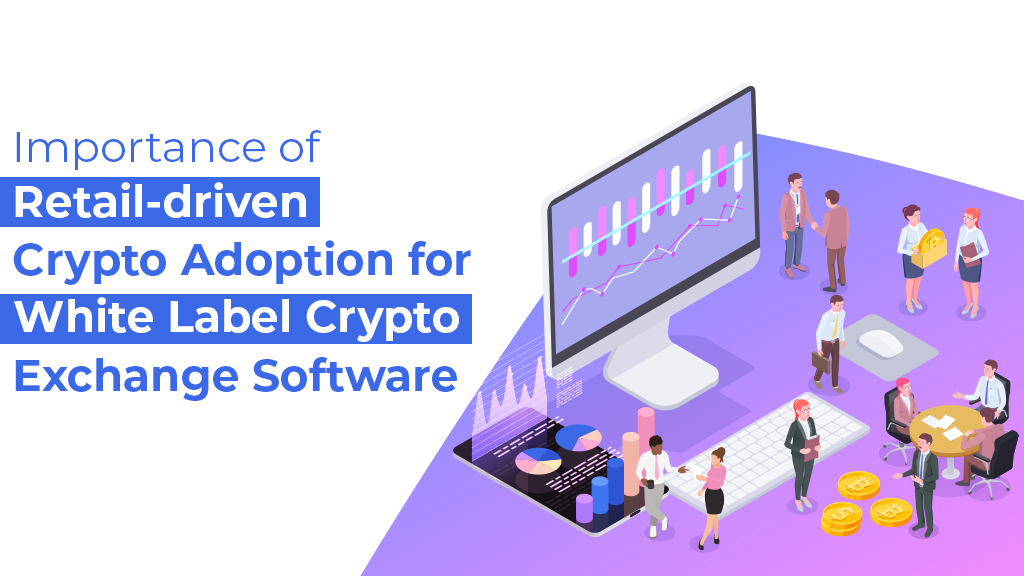Although Bitcoin and other coins may have plummeted in value since early 2018, traders are increasingly embracing Bitcoin and other cryptocurrencies as a payment method. They designed cryptocurrencies to be a more decentralized and usable form of money, after all. So, what are the coming crypto adoption patterns and obstacles and how cryptocurrency exchange software needs to adapt to those trends? Let’s just find this out…
INCREASED RETAIL ADOPTION
Overstock, a major electronics e-store, is the first retailer to accept Bitcoin as a method of payment. They recently added over 40 altcoins to their roster of options. When Bitcoin payment methods were introduced in 2014, electronics and the computer retailer Newegg were quick to follow. Other proven giants in Cryptocurrency include Amazon, Microsoft, Apple, Expedia and Cheap Air.
It is interesting to note that in other sectors, some applications made available by cryptocurrencies fit better than others. Casino and iGaming industries were also quick to adopt, with Bitcoin casinos at their front desks, gift shops and restaurants providing user payments. E-commerce firms should provide an option for international payments without the usual transactional hassles. Moreover, coins for secrecy have seen increased adoption not only in illicit trade but also in transactions that require high confidentiality levels.
The CEO of cryptocurrency payment processor Bitpay says retailer demand is growing in Canada and mentions that Overstock’s acceptance will help drive broader adoption. This is great news for the whole Crypto Money industry. Not only that, but the number of institutionally managed funds that concentrate on cryptocurrencies as an asset class is rising ever more. Prominent fund managers such as Jacob Gottlieb are in the midst of developing funds to capitalize on the nascent cryptocurrency market.
Indeed, there are now more than 370,000 sellers in 182 countries taking Bitcoin payments. In 2017 alone, the number of retailers that approved cryptocurrency increased by 30 per cent. This seemed to raise Bitcoin’s value (another word for’ use-case’), as monthly payments for goods and services increased from 9.2 million in 2013 to 190.2 million in 2017—an rise of 2000 per cent. Here’s a look at the growing number of firms that adopted Bitcoin in 2017:
BARRIERS FOR RETAILERS IN ACCEPTING CRYPTOCURRENCIES
Unfortunately, there are still many barriers which prevent merchants from accepting more widespread cryptocurrency payments.
VOLATILITY
The primary challenge is the cryptocurrency market’s extreme volatility; retailers have difficulty accepting, and consumers have trouble investing in an environment that is seeing prices so dramatically spike. Make no mistakes, cryptocurrencies may be today’s most impredictable asset. Make no mistakes, cryptocurrencies may be today’s most impredictable asset.
LIQUIDITY ISSUES
Bitcoin can also be difficult to liquidate leaving huge financial risks for retailers. If sufficient liquidity is given, merchant productivity (due to large spreads) would be reduced, market volatility increased, and operating performance delayed. Add to this the normal fluctuation of the network in transaction fees and processing times and it is easy to understand why retail growth was slow.
SOLUTION
One possible solution to the above-mentioned problems is for merchants to have access to trading platforms operating on custom cryptocurrency exchange software that locks in the real-time exchange rate and enables transactions to be settled either in crypto or fiat. If cryptocurrencies were accepted as payment method, this would mitigate risk and organizational inefficiency.




